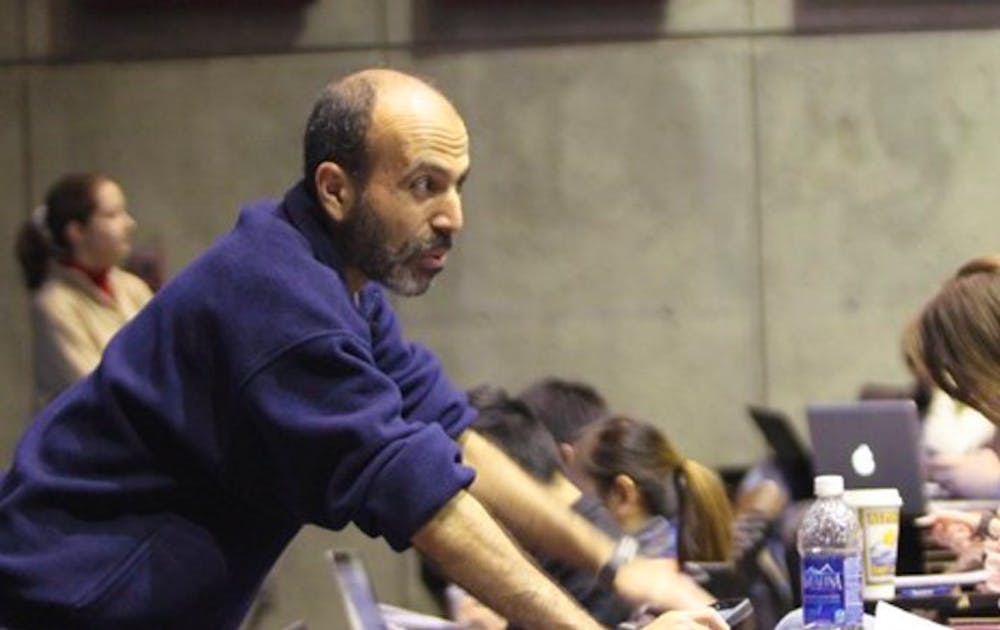Recipient of the Darwin-Wallace Medal, Mohamed Noor—professor of biology and former chair of Duke's biology department—recently published a book entitled Live Long and Evolve: What Star Trek Can Teach Us about Evolution, Genetics and Life on Other Worlds.
The Chronicle's Ashwin Kulshrestha and Michael Lee interviewed Noor about his new book and his breakthroughs in evolutionary biology. This interview has been edited for length and clarity.
TC: How early did you consider pursuing a career in science?
MN: I recently found my seventh grade yearbook, and someone had made a comment in there, ‘Some day you’re going to be a great biologist’. So clearly I was very excited. I think if you go back further, to like fourth grade, I used to say astronomer or something like that.
TC: Can you provide details about winning the Darwin-Wallace medal?
MN: It’s funny because when I got the letter, it actually came in the mail. I thought it was one of those fake things, and I almost just threw it away. Luckily I stopped, and I went on my computer and Googled it. I had never heard of it. Obviously, the last time it had been awarded before was 1958–that was before I was born. It was very flattering. Especially when they then asked me to give a speech at the Linnean Society—at the same place where Darwin had given his famous speech. Like why? Why me? Very flattering.
TC: What were the greatest challenges in making science more accessible in Live Long and Evolve?
MN: The idea behind this book was basically to take all Bio 202 and make it much more accessible. One of the challenges was finding something to cover a particular topic. For example, genetic drift. I really wanted genetic drift to be in there. Genetic drift comes up twice in Star Trek—in both cases used completely wrong. So I was trying to find an example of where you can see genetic drift as opposed to the term coming up and used completely wrong. It was hard to come up with examples of some things.
TC: How has Star Trek impacted your scientific interests and research?
MN: What I love about Star Trek is that—through all the series, you can see this with the quotes in the beginning about seeking out new life—it is very much advocating basic science. It’s very much advocating ‘we don’t know something, we want to go explore, we want to go understand it.’ And that’s something that’s a little bit rare.
Usually when you hear people talking about the advantage of science, it’s in the context of agriculture, health, all that kind of stuff. But [Star Trek] is very much, we just want to go discover because it’s cool, it’s really cool to discover things. And that comes up a lot in the various Star Trek series, and that reinforced my perception that this is really good.
That was a contrast, for example, to my parents because they were engineers. Engineering is an intrinsically very applied discipline, whereas what I do as a scientist is a much more basic science. I’m very interested in the processes that make new species. That is unlikely to yield a cure to cancer, but it’s fascinating and it’s just a great area to explore.”
TC: You recently gave a talk on why there are so many humanoid species in Star Trek. Can you briefly describe the reasons you gave in your talk?
MN: So the talk is not actually aimed at answering the question in the title. The talk is basically an evidence for evolution talk and introduction to evolutionary thinking. That’s the purpose behind why I’m giving the talk, and it’s similar for the Live Long and Evolve book too. The idea behind it isn’t to critique Star Trek. The idea is to find another entry point to talk about evolution and some fundamental evolutionary concepts. It makes it just a bit easier to grasp and not as threatening.
In Star Trek, obviously, there are a lot of humanoid species, which doesn’t make any sense. They actually present three hypotheses in Star Trek to explain that. One of the things that I do in the talk is actually break down the hypotheses into three predictions, and then use actual science to address if it is feasible. But again, the question is actually secondary to the process.
TC: What do you consider to be your greatest accomplishment?
MN: In the late 1990s, I had an NIH grant with Jody Hey at Rutgers University. Our goal was to try to map all the traits that are associated with making new species in fruit flies. We found that everything mapped to these chromosomal inversions.
Initially we just thought this was a nuisance. It was frustrating because we wanted to actually map it down to specific genes, but this stopped us because we couldn’t narrow it down any further. Eventually, as we started thinking about this and seeing it over and over again as we were looking at different traits, we came up with a model to explain it. I think that is my most highly cited paper, and it’s probably the one honestly that I’m most proud of. I’m very, very happy that that model seems to be right. It framed a lot of the conversation from there out, and that’s something that I’ve been very proud of.
TC: What is your favorite thing about being a professor at Duke?
MN: It’s working with the people here. The reason I came to Duke was because I was asked to serve on somebody’s dissertation committee. I would come here for visits to serve on her dissertation committee. Just the community, the environment, the students–I just loved it from that point on. And it was because of that that I started actively pursuing getting a job at Duke.
Get The Chronicle straight to your inbox
Signup for our weekly newsletter. Cancel at any time.

